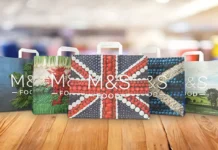Various materials are coming on the market to support mineral oil barrier functionality in food packaging manufactured from recycled paper.

WIDELY held expectations of EU regulation to curb mineral oil content in food packaging have been thwarted as yet.
The German food packaging association, the BfR – arguably the biggest and most influential one in Europe – has so far refrained from issuing recommendations on the matter, presumably because there is still too much mill capacity invested in recycled paper, with its high mineral oil content.
So in the meantime, the focus remains one of finding ways to keep MO content out of food, through the use of clever barrier materials.
Sappi unveiled its latest barrier paper grades for this purpose at Interpack in May. The Leine Guard M and Algro Guard M products are paper grades developed in partnership with coating specialist BASF and testing Lab Eurofins. They are said to protect food for a minimum of 15 months.
The two are used in different types of packaging. Leine Guard M is for inner bags and combines Machine Glazed Bleached Kraft (MGBK) paper with the mineral oil barrier on the reverse side. It is available in 80 g/m² to 120 g/m².
Algro Guard M, on the other hand, has been designed for gravure printed primary packaging such as pouches, sachets, bags and wrappers.
Since there is no use of PET or aluminium, these paper grades are said to use a “sustainable, environmentally friendly and cost effective material”. The barrier itself is formed of “an aqueous dispersion polymer system”.
Tests have also shown the material forms a barrer against aroma and grease.
Algro Guard M and Leine Guard M became available in June.
Renewable rival
A rival system from German firm Xylophane appears to differ from Sappi’s in its greater reliance on naturally occuring, renewable materials.
According to the company’s Håkan Grubb, who manned the company’s stand at Interpack in May, Xylophane’s barrier material Skalax differs from alternatives in that it is “not oil based”. The company is a spin-off from research work carried out over 10 years ago. Skalax is based on xylan, a natural carboyhydrate – said to be one of the most abundantly occurring there is – found in cereal hulls and husks. Until now it has not been used in industrial products.
Xylophane’s underlying technology has been a method to isolate xylan from certain agricultural by-products such as cereal hulls and husks. Once the xylan is isolated, Xylophane adds “food-contact approved additives” to realise customised properties for different areas of application.
A layer of Skalax can be applied within the structure of multi-layer packaging using dispersion coating, a processing technology already widely used in the production of paper and cardboard.
The company’s website says Skalax-coated substrates can be combined with other materials to add properties like sealability and moisture protection to form a complete packaging material.
Suggested applications include the packaging of oxygen-sensitive dairy products, greasy snacks or pet foods, as well as aromatic products like spices and coffees. The material has been employed in paper sacks made by Swedish firm Jonsac AB.
Mineral oil migration issues arise because of the food industry’s use of packaging that is manufactured from recycled paper, for which one of the primary raw materials is newspaper, which contains a high level of mineral oil content, said to be carcinogenic.












